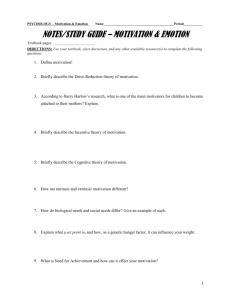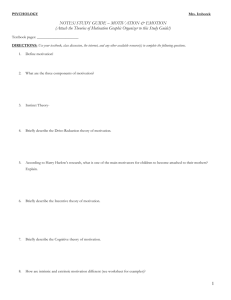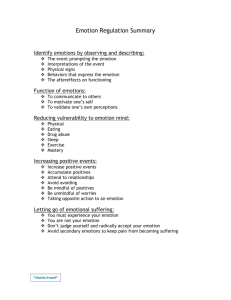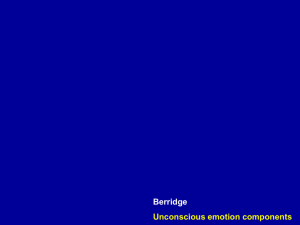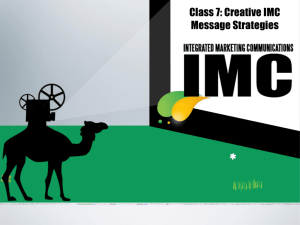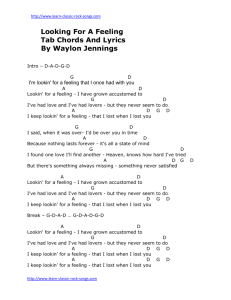HSP3M Ch # 4: Motivation & Emotion
advertisement
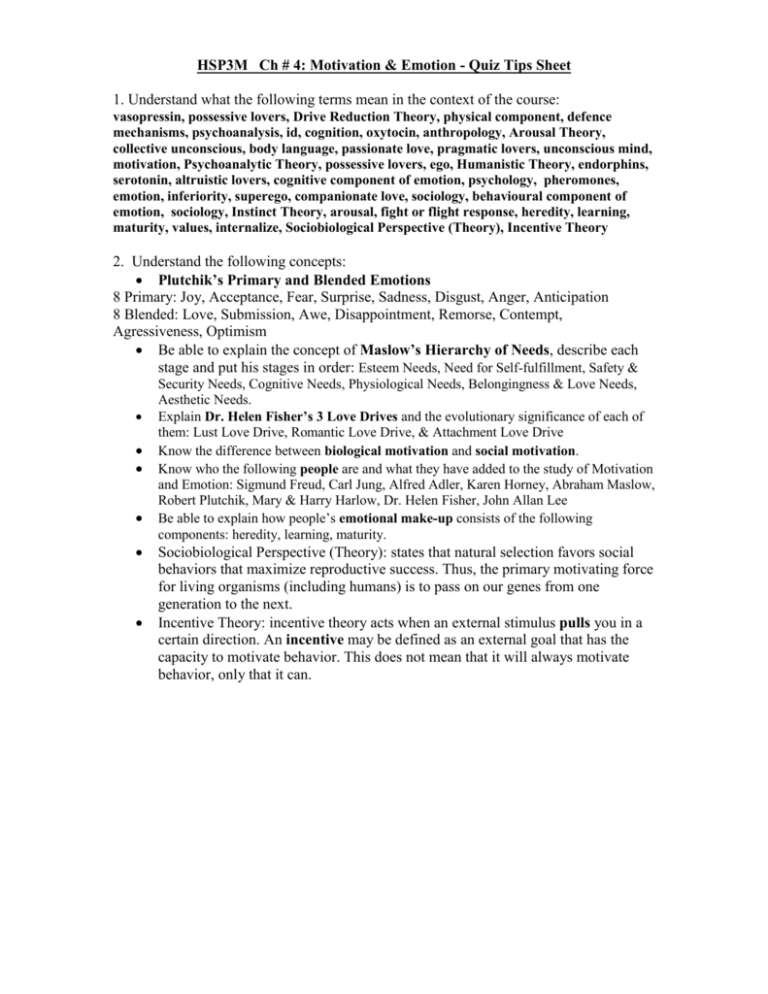
HSP3M Ch # 4: Motivation & Emotion - Quiz Tips Sheet 1. Understand what the following terms mean in the context of the course: vasopressin, possessive lovers, Drive Reduction Theory, physical component, defence mechanisms, psychoanalysis, id, cognition, oxytocin, anthropology, Arousal Theory, collective unconscious, body language, passionate love, pragmatic lovers, unconscious mind, motivation, Psychoanalytic Theory, possessive lovers, ego, Humanistic Theory, endorphins, serotonin, altruistic lovers, cognitive component of emotion, psychology, pheromones, emotion, inferiority, superego, companionate love, sociology, behavioural component of emotion, sociology, Instinct Theory, arousal, fight or flight response, heredity, learning, maturity, values, internalize, Sociobiological Perspective (Theory), Incentive Theory 2. Understand the following concepts: Plutchik’s Primary and Blended Emotions 8 Primary: Joy, Acceptance, Fear, Surprise, Sadness, Disgust, Anger, Anticipation 8 Blended: Love, Submission, Awe, Disappointment, Remorse, Contempt, Agressiveness, Optimism Be able to explain the concept of Maslow’s Hierarchy of Needs, describe each stage and put his stages in order: Esteem Needs, Need for Self-fulfillment, Safety & Security Needs, Cognitive Needs, Physiological Needs, Belongingness & Love Needs, Aesthetic Needs. Explain Dr. Helen Fisher’s 3 Love Drives and the evolutionary significance of each of them: Lust Love Drive, Romantic Love Drive, & Attachment Love Drive Know the difference between biological motivation and social motivation. Know who the following people are and what they have added to the study of Motivation and Emotion: Sigmund Freud, Carl Jung, Alfred Adler, Karen Horney, Abraham Maslow, Robert Plutchik, Mary & Harry Harlow, Dr. Helen Fisher, John Allan Lee Be able to explain how people’s emotional make-up consists of the following components: heredity, learning, maturity. Sociobiological Perspective (Theory): states that natural selection favors social behaviors that maximize reproductive success. Thus, the primary motivating force for living organisms (including humans) is to pass on our genes from one generation to the next. Incentive Theory: incentive theory acts when an external stimulus pulls you in a certain direction. An incentive may be defined as an external goal that has the capacity to motivate behavior. This does not mean that it will always motivate behavior, only that it can.
